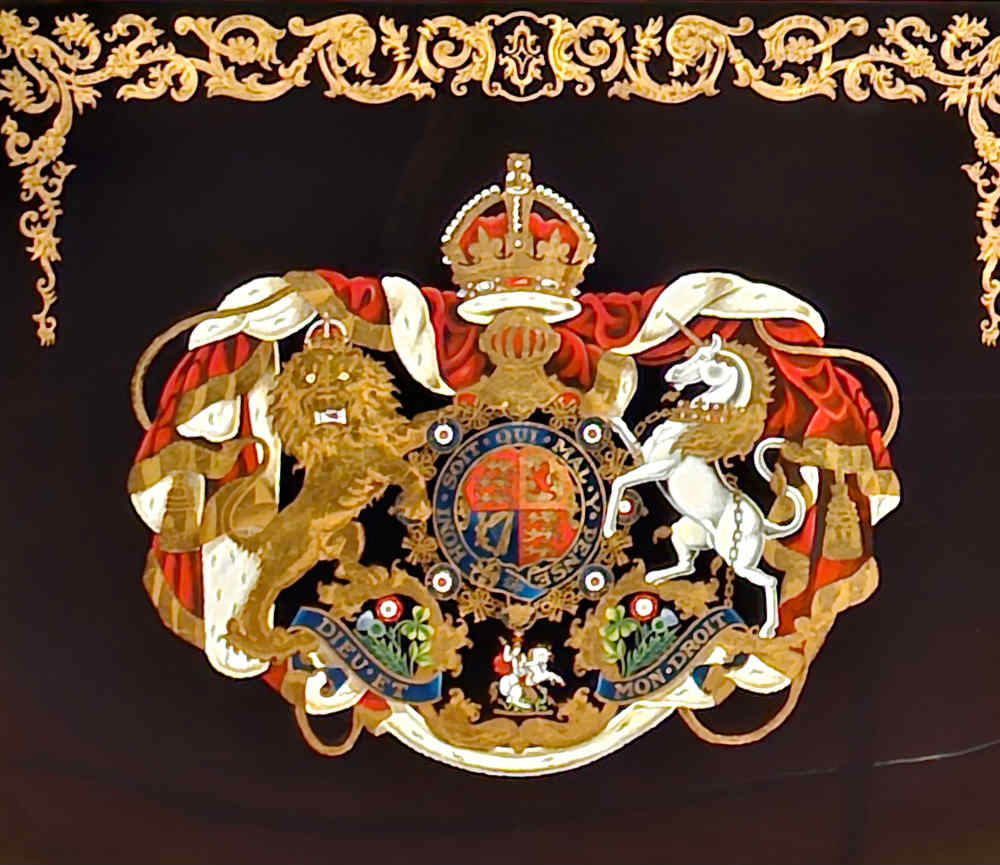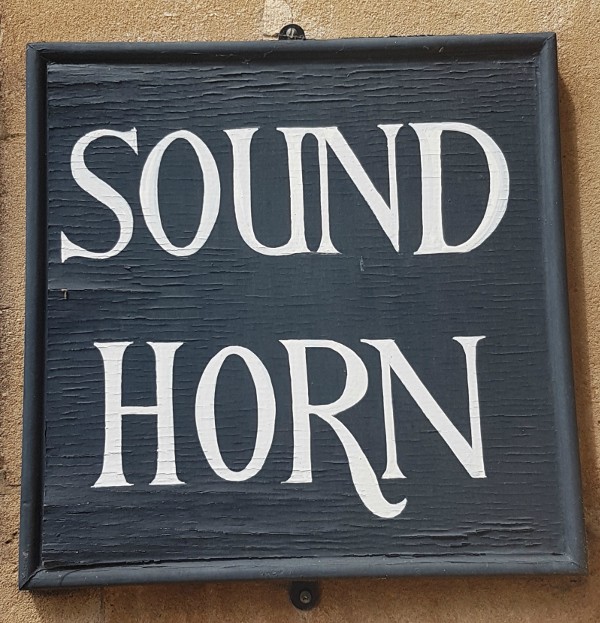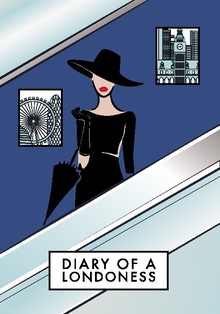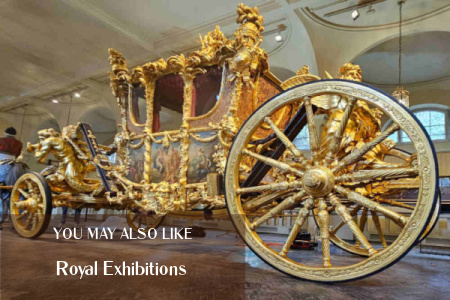If cars, carriages and horses went to heaven, The Royal Mews is where they would go. Tucked away behind Buckingham Palace, this is the ultimate stable for regal steeds and stately wheels and it reins supreme. And I’m sure Cinderella wouldn’t say neigh to trotting off in a Royal Carriage for her amorous rendez-vous with Prince Charming. For now though, we’ll have to settle with the Coronation of King Charles III and the Queen Consort to see some of these royal carriages on duty.
Visiting the Royal Mews
Royal Mewsings
The word “mews” originates from the French word “muer” or to moult. The royal hawks were originally held in the King’s Mews in Charing Cross (where the National Gallery stands today) whilst their feathers moulted. During Henry VIII’s reign, the original mews was destroyed by fire and rebuilt as royal stables, retaining its original name. The King’s Mews relocated to Buckingham Palace, morphing into the Royal Mews after a design by John Nash for George IV. Today, the Royal Mews is home to the royal collection of coaches, carriages and cars, and it has one of the world’s finest working stables.
Gold State Coach and the Coronation
 Dating from 1760, the Gold State Coach is the oldest, and has been used for every coronation since George IV. Queen Victoria referred to its “distressing oscillation” whilst William IV said travelling in the State Coach was like “tossing in a rough sea.” King Charles III and the Queen Consort will be driving in the Gold State Coach from Westminster Abbey to Buckingham Palace after the Coronation on May 6.
Dating from 1760, the Gold State Coach is the oldest, and has been used for every coronation since George IV. Queen Victoria referred to its “distressing oscillation” whilst William IV said travelling in the State Coach was like “tossing in a rough sea.” King Charles III and the Queen Consort will be driving in the Gold State Coach from Westminster Abbey to Buckingham Palace after the Coronation on May 6.
The Diamond Jubilee State Coach
 The Diamond Jubilee Coach is the Royal Mews’s carriage with the mostest: heating, air-conditioning, hydraulic suspension and electric windows come as standard. It was designed by an Australian, Jim Frecklington, who worked in the Royal Mews as a young man. The coach weighs three tons and it requires three grooms and six horses to pull it.
The Diamond Jubilee Coach is the Royal Mews’s carriage with the mostest: heating, air-conditioning, hydraulic suspension and electric windows come as standard. It was designed by an Australian, Jim Frecklington, who worked in the Royal Mews as a young man. The coach weighs three tons and it requires three grooms and six horses to pull it.
The coach is also a moving museum of artefacts from 100 of Britain’s historical sites. There’s a lead musket ball from the Battle of Waterloo, fragments of a dress worn by Florence Nightingale, and the crown is made from parts of Nelson’s HMS Victory (with a concealed camera inside). Timber segments from the Tower of London, St Paul’s Cathedral, Hampton Court Palace, to name a few, can be found in the interior lining, and the two door handles are decorated with 24 Kiwi diamonds and 130 sapphires.
 The Diamond Jubilee Coach is filled with historical artefacts including segments from Britain’s most famous buildings. The panelling inlay also incorporates pieces of Isaac Newton’s tree, wood from the Mayflower and metalwork from a Spitfire. King Charles III and the Queen Consort will be driving in the Diamond Jubilee Coach from Buckingham Palace to Westminster Abbey for the Coronation on May 6.
The Diamond Jubilee Coach is filled with historical artefacts including segments from Britain’s most famous buildings. The panelling inlay also incorporates pieces of Isaac Newton’s tree, wood from the Mayflower and metalwork from a Spitfire. King Charles III and the Queen Consort will be driving in the Diamond Jubilee Coach from Buckingham Palace to Westminster Abbey for the Coronation on May 6.
The Glass Coach
The Glass Coach was built in 1881 and was purchased for George V’s coronation in 1911. It has been used to carry the bride-to-be to church (as with Lady Elizabeth Bowes-Lyon in 1923, Lady Diana Spencer in 1981 and Miss Sarah Ferguson in 1986). It is also used to carry the newlyweds from church after the service (as with Princes Elizabeth and the Duke of Edinburgh in 1947).
 The British pride themselves on 100% military precision and punctuality when it comes to all things pomp and circumstance, and royal weddings are no exception. Or at least, that was the case until Lady Diana married Price Charles on the 29th July 1981. The bride insisted on being late, and she did this by a whopping 30 seconds!
The British pride themselves on 100% military precision and punctuality when it comes to all things pomp and circumstance, and royal weddings are no exception. Or at least, that was the case until Lady Diana married Price Charles on the 29th July 1981. The bride insisted on being late, and she did this by a whopping 30 seconds!
Cars and Limousines in the Royal Mews

_autotone
The Royal Mews also houses a mix of State and Non-state Cars. The five State Cars do not have licence plates and include a selection of British-made Rolls Royces and Bentleys. There are eight chauffeurs, but only the Head Chauffeur and the two Deputy heads can drive the King.
The Royal Mews Carriage Horses
 The carriage horses are either Windsor Greys or Cleveland Bays. They are bred in Hampton Court, broken-in at Windsor Castle and moved to the Royal Mews at the age of four. They are exercised in Hyde Park and St James’s Park. The Queen personally named all her horses.
The carriage horses are either Windsor Greys or Cleveland Bays. They are bred in Hampton Court, broken-in at Windsor Castle and moved to the Royal Mews at the age of four. They are exercised in Hyde Park and St James’s Park. The Queen personally named all her horses.
Visiting the Royal Mews

The Royal Mews, Buckingham Palace, London, SW1W 1QH. Nearest tube: Victoria
Adult Tickets £15 , and all admission prices include a multimedia tour. Under 5s go free. You can book your tickets here. At the end of your visit, ask a Warden to stamp your ticket to convert it into a 1- Year Pass for which you can enjoy free re-admission.
Please note: The Royal Mews is open until 30 October 2023.





16 Comments
Nancy l MapandFamily
July 24, 2018 at 8:28 pmGreat girls’ day out Scarlett and you’ve just given me some inspiration for an outing for a friend too! Love that the Jubilee coach has little antique keepsakes built in!
DiaryofaLondoness
July 24, 2018 at 9:15 pmIt’s a meticulous and delightful piece of design. Thanks Nancy, I hope your friend makes it to the mews with the mostest!
Fiona Sheppard
May 6, 2023 at 9:38 amMy son was out in London yesterday and saw what looked like the Golden State Coach on a low loader. Was it the actual state coach being taken to Westminster Abbey for the return procession?
Scarlett
May 24, 2023 at 7:03 pmNo, the Gold State Coach was taken by horse to Westminster Abbey. It could perhaps have been the Lord Mayor’s State Coach which is quite similar.
Lana_SHON
August 19, 2017 at 8:06 pmVery cute! Have a nice weekend!
Miriam
August 10, 2017 at 7:52 amWhat a lovely day out – would love to visit the Royal Mews, the Gold State Coach looks impressive and I am always up for some delicious gelato 🙂
DiaryofaLondoness
August 16, 2017 at 3:51 pmYo would love it Miriam, and of course, gelato is right up your culinary street!
Shelley Roitman
August 10, 2017 at 12:38 amHow a young girl can become a princess in one magical afternoon in London – fun for everyone.
Shelley Goodman
August 9, 2017 at 11:42 pmDoes Anais realize what a little princess she is exploring the town with The Londoness?
DiaryofaLondoness
August 10, 2017 at 7:44 amYes Shelley, she happily hops around with Mummy discovering London’s magical places!
Shelley Goodman
August 9, 2017 at 11:38 pmDoes Anais realize what a princess-like childhood she has exploring the town with the Londoness?
DiaryofaLondoness
September 5, 2017 at 4:08 pmShe is a very lucky girl!
Louise Riis
August 9, 2017 at 11:59 amOh wow! Ever since I was a little girl, I have wanted my own Cinderella carriage…. I guess we are all wanna-be princesses!
What a lovely day, you girls had 🙂
X Louise
DiaryofaLondoness
August 9, 2017 at 2:41 pmI can see you waving from the Glass Coach now Louise!
Tanja (the Red phone box travels)
August 8, 2017 at 8:56 ambeautiful carriages! I’ve been to a carriage museum in Vienna, those were fantastic too:)
DiaryofaLondoness
August 8, 2017 at 8:59 amOh wow Tanja, that must have been equally majestic! Scarlett x